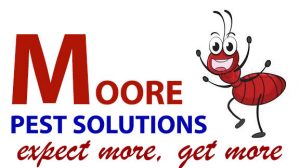Dampwood Termite (Zootermopsis angusticollis)
Quick Look Pest Stats
Color: Creamy white to Brownish
Legs: 6
Shape: Long narrow, oval They have a large head with mandibles (pincers) on the front.
Size: 1/2″ – 5/8″
Antennae: Yes
Region: Found in WA, OR, CA, NV, ID, MT, FL

As the name suggests, dampwood termites infest wood with a high moisture content. Dampwood termites are normally larger in size than other termite species. Bodies of king and queen dampwood termites range in size from 1/2 inch to 5/8 inch long and have two pairs of wings that are equal in size and shape and extend beyond their abdomen. Nymphs range up to 5/8 inch and worker dampwood termites are up to 3/4 inch.

Habitat
Dampwood termite colonies, like drywood termites, have no worker caste. The nymph dampwood termites take care of the kings and queens of the colony and feed the soldier caste. Because of their need for excessive moisture, dampwood termites are not often found in structures. These termites create a series of chambers in wood, which are connected by tunnels with smooth walls, as if sandpapered. These termites are usually found in logs, stumps, dead trees, fence posts and utility poles.
Food
Wood, your home if you let them.
Biology
A pair of winged swarmers starts a colony of dampwood termites. They find a suitable piece of wood and make a chamber in it. They produce a few eggs the first year. Colonies are usually small, but in ideal conditions dampwood termite colonies can become large. There are no dampwood termite workers. Large winged swarmers, winged males and females, are produced for the purpose of mating and starting new colonies. These may be confused with winged ants, but the termites have straight antennae, four pairs of equal length wings and a straight sided body.
Threat
Dampwood termites do not usually infest structures because of the low moisture content of wood in structures. However, care must be taken to avoid attracting dampwood termites to a structure, as they can cause serious property damage. Dampwood termites and other termite species cause a collective $5 billion in property damage each year.
Detection
Dampwood termites do not usually have contact with the soil. They do not make tunnels like the subterranean termites, so detection can be more difficult. There are several signs that you should look for that termites leave behind when they are actively attacking the wooden structures inside your home. Look for things such as wood that appears crushed, wood that sounds hollow when tapped on, or wood that looks blistered. The more obvious signs include finding discarded sets of wings on window sills, tubs, and sinks, seeing termites swarming around the outside of your home, and finding small piles of ‘frass’ (termite droppings).
Prevention
To avoid dampwood termites, make sure downspouts and gutters are diverted well away from the structure, and avoid prolonged contact between a structure and large areas of moisture, such as ponds or snow drifts. . To prevent dampwood termites indoors, reduce humidity by properly ventilating crawl spaces, attics and basements.
info@moorepestsolutions.com
OR 503-342-4329
WA 360-635-5345

